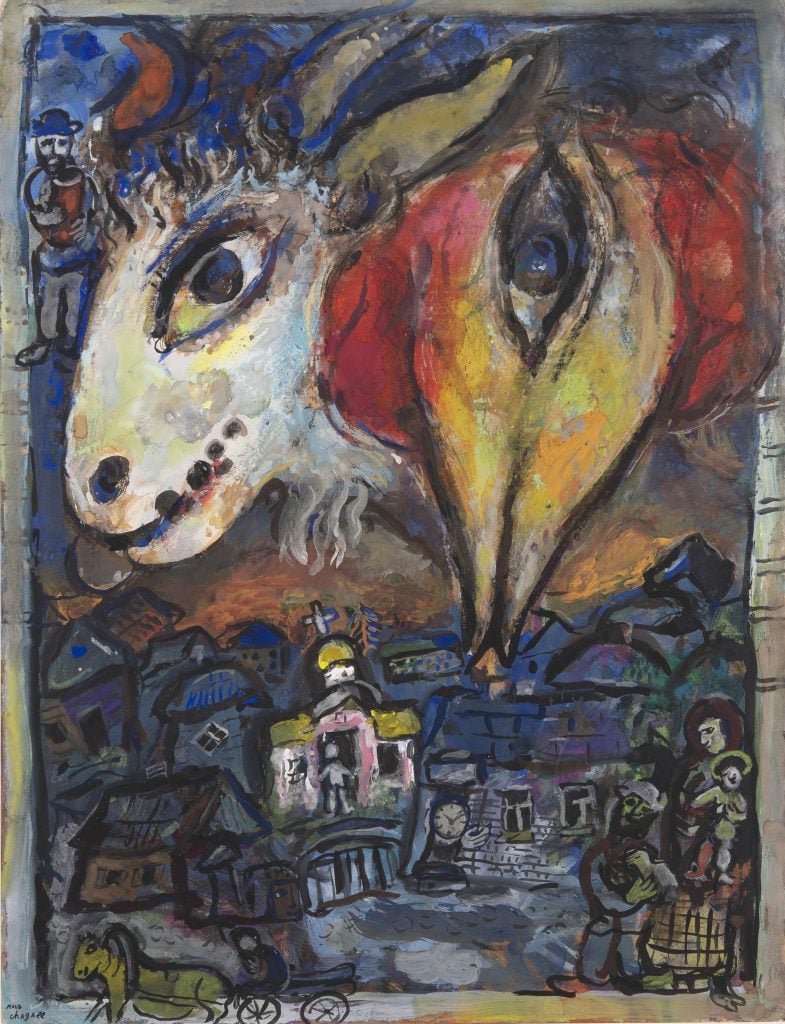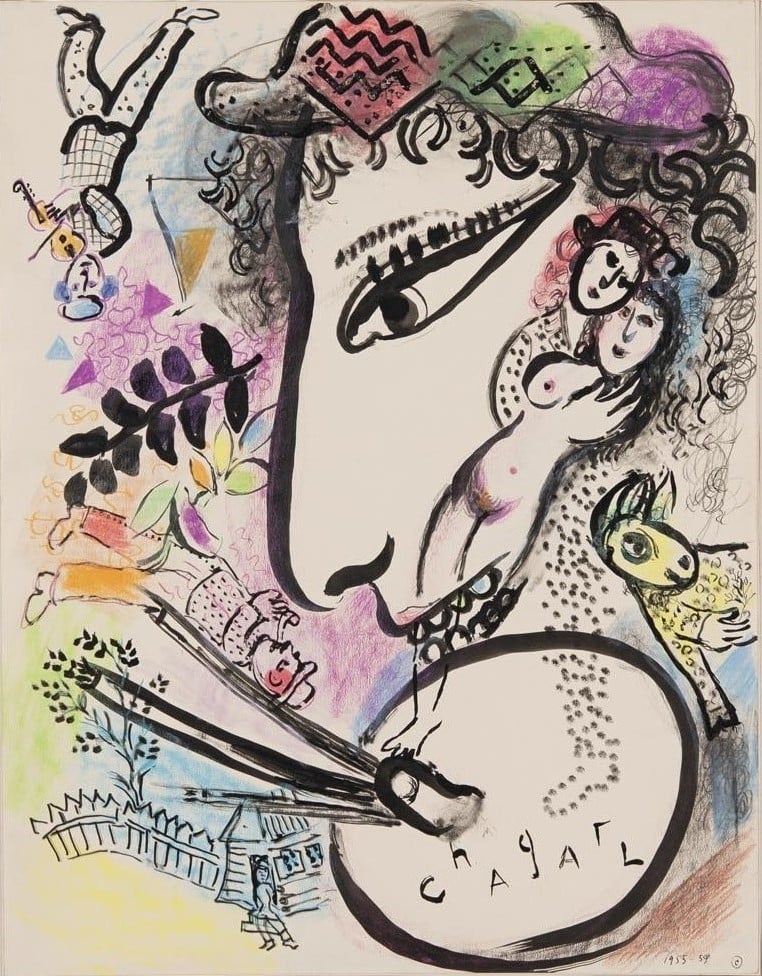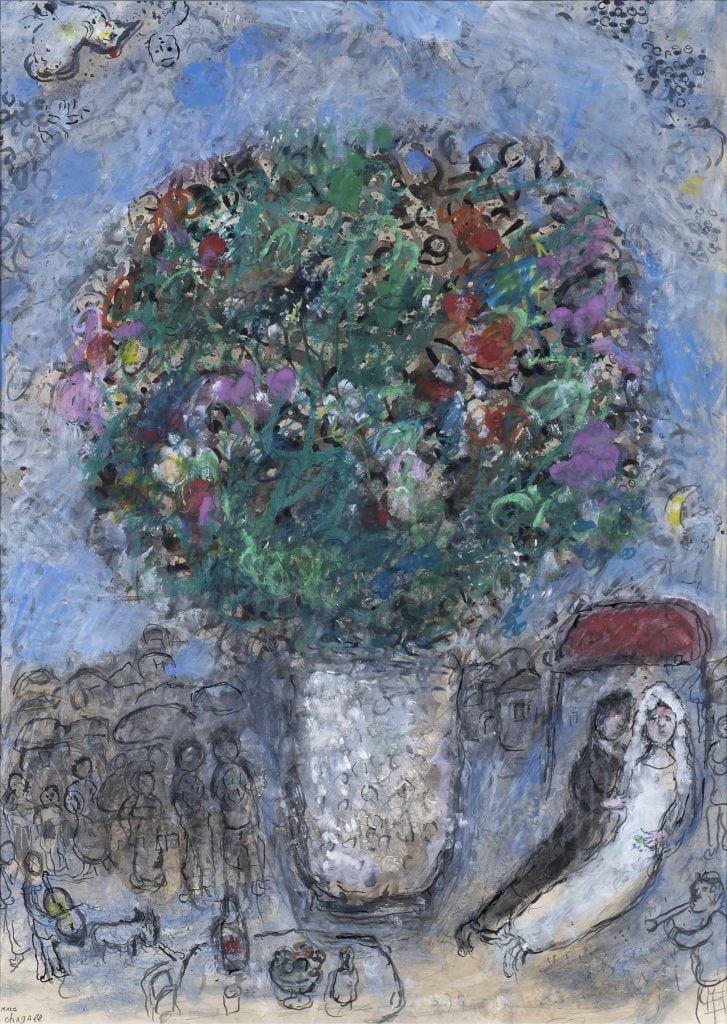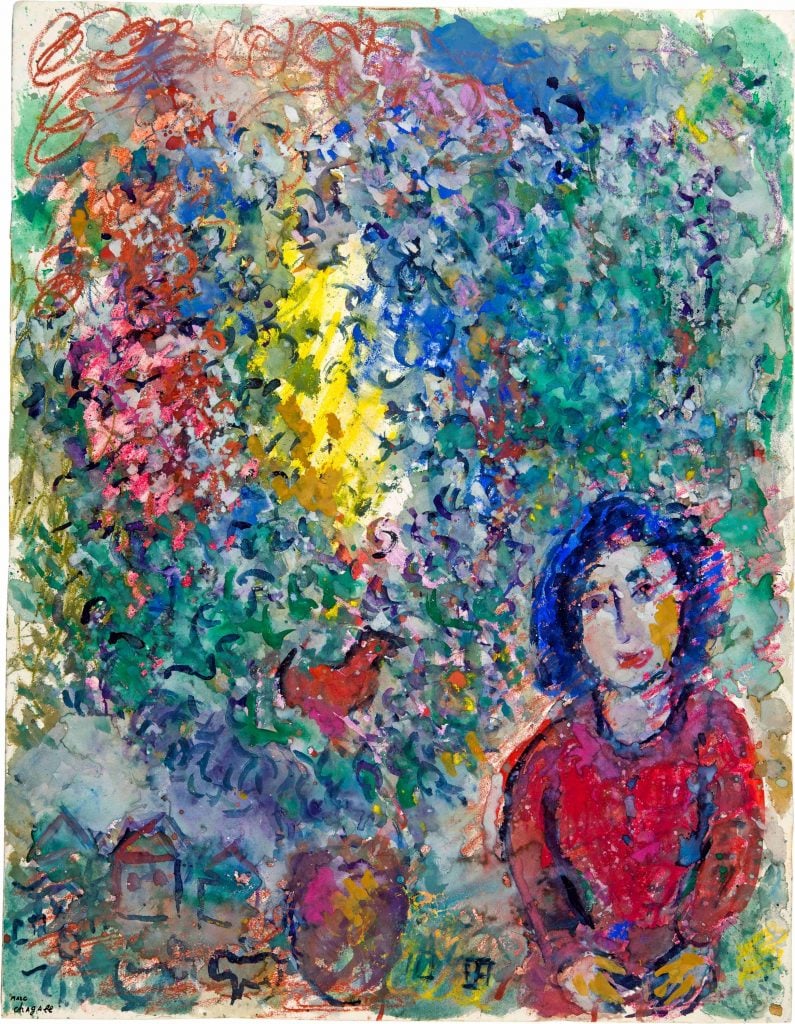Gallery Network
Spotlight: An Exhibition of Marc Chagall Offers Insight Into the Beloved Artist’s Later Career
The comprehensive show is slated to go on view at Galerie Utermann in Dortmund, Germany.

The comprehensive show is slated to go on view at Galerie Utermann in Dortmund, Germany.

Artnet Gallery Network

Every month, hundreds of galleries add newly available works by thousands of artists to the Artnet Gallery Network—and every week, we shine a spotlight on one artist or exhibition you should know. Check out what we have in store, and inquire for more with one simple click.
What You Need to Know: Following extensive preparations, Galerie Utermann based in Dortmund, Gemany, is slated to present a comprehensive solo exhibition of work by Marc Chagall. On view at the gallery from May 27–July 12, 2024, the show is comprised of 22 works—ranging from preparatory pieces for major paintings to self-portraits and, of course, pieces centered on his iconic ‘lovers’ motif. With the works going on view dating from the latter half of the artist’s life, the show promises to immerse viewers in Chagall’s singular creative vision evidenced in the heights of his mature period.

Marc Chagall, Le Grand Visage (1955-59). Courtesy of Galerie Utermann, Dortmund.
About the Artist: Russian-French artist Marc Chagall (1887–1985) is widely recognized and revered for his dreamy, surreal compositions that employed a visual lexicon of signs and symbols personal to the artist. A pioneering figure within the Parisian avant-garde in the 1910s and 1920s, alongside artists such as Robert Delaunay and Fernand Léger, he maintained a prodigious output, working across painting, drawing, illustration, glass, ceramic, as well as creating stage sets. Some of his most beloved works contain an element of romanticism, which frequently feature the artist and his wife and other “eternal lovers” set within imaginative landscapes. His life was marked by upheaval, specifically tied to the World Wars, which influenced his practice and approach to art making.

Marc Chagall, Mariage au grand bouquet (ca. 1979). Courtesy of Galerie Utermann, Dortmund.
Why We Like It: The solo exhibition of select Chagall works at Galerie Utermann this month offers an unparalleled opportunity to see a diverse range of the artist’s work all together. Drawn from the second half of the artist’s life, it offers insight into the artistic lines of inquiry that rose to the fore in his practice. Chief among these, in the shadow of the second World War II, Chagall explored his own Jewish-Russian ancestry and Judaic visual culture, as well as reflected on the devastating death of his first wife Bella Rosenfeld. These potent sources of inspiration are apparent in the works, resulting in pictorial, narrative compositions full of color and imagination. For example, Mariage au grand bouquet (ca. 1979) features a bride and groom (Chagall and Bella), dwarfed by a monumental bouquet of flowers, symbolic of love, beauty, and renewal. In La fruite: coq et boue au dessus du village (1962), the work memorializes the destruction of his hometown by Nazi invasion, with the goats head engaging with traditions of Jewish sacrifice, and simultaneously operating as a symbol within Chagall’s oeuvre of the ruthless treatment of Jewish people in Russia and Europe.

Marc Chagall, Feme au corsage rouge avec grand bouquet (ca. 1984). Courtesy of Galerie Utermann, Dortmund.
“Marc Chagall” is on view at Galerie Utermann, Dortmund, Germany, May 27–July 12, 2024.